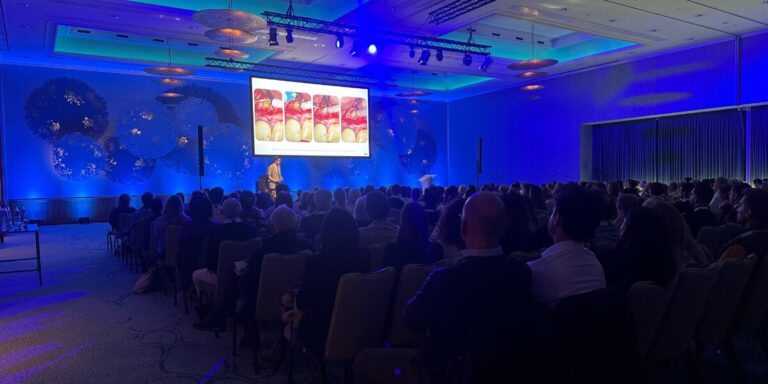Reactie NVvE op 3 position statements van de ESE
1. Use of antibiotics in Endodontics
This position statement represents a consensus of an expert committee convened by the European Society of Endodontology (ESE) on Antibiotics in Endodontics. The statement is based on current scientific evidence as well as the expertise of the committee. The goal is to provide dentists and other healthcare workers with evidence-based criteria for when to use antibiotics in the treatment of endodontic infections, traumatic injuries of the teeth, revascularization procedures in immature teeth with pulp necrosis, and in prophylaxis for medically compromised patients. It also highlights the role that dentists and others can play in preventing the overuse of antibiotics.
Zie http://onlinelibrary.wiley.com/doi/10.1111/iej.12781/full
The review article that informed the position statement
Reactie van de Wetenschappelijke Commissie van de NVvE:
De NVvE neemt het position statement over antibioticagebruik niet over. Het verschilt op te veel punten met ons lokale - lees Nederlandse – antibioticabeleid.
Wij hanteren andere diagnoses en kennen het begrip acute apicaal abces niet. Wanneer parodontitis apicalis gepaard gaat met malaise en koorts, dan is verwijzing naar een mka-chirurg de gewezen route.
Voor richtlijnen betreffende antibioticaprofylaxe verwijzen wij naar de Nederlandse richtlijnen van de KNMT voor antibioticaprofylaxe bij kunstgewrichten en de Nederlandse Hartstichting voor advies ter voorkoming van endocarditis.
Er is geen indicatie voor het gebruik van lokale antibiotica in de endodontologie. Het is niet bewezen dat lokale applicatie van antibiotica beter desinfecteert dan irrigatie met natriumhypochloriet.
Wat betreft de suggesties van voor te schrijven antibiotica verwijzen wij naar het farmacotherapeutisch kompas.
Vergeleken met de rest van Europa wordt in Nederland de minste hoeveelheid antibiotica voorgeschreven (CBS 2016) en dat moeten we vooral zo houden. Er is nog ruimte om het gebruik in Nederland terug te dringen en daar kunnen/moeten we als kritische zorgverleners aan blijven bijdragen. Bijvoorbeeld door geen antibiotica meer voor te schrijven bij pijn van endodontische oorsprong. Zowel bij pijn door pulpitis als bij parodontitis apicalis is er geen indicatie voor het gebruik van antibiotica. Dan is het zaak om:
- bij pulpitis het ontstoken pulpaweefsel te verwijderen;
- bij pijnlijke parodontitis apicalis bij DETI-A en DETI-B I een adequate endostart uit te voeren;
- bij complexere behandelingen bij pijnlijke parodontitis apicalis de patiënt goed voor te lichten over het verloop van de pijn en een verwijzing naar een meer bekwame collega te regelen. Bij een goede voorlichting van de patiënt hoeft deze verwijzing niet dezelfde dag plaats te vinden;
- sowieso de patiënt advies te geven over adequate pijnstilling, waarbij paracetamol (4 g per dag) en een N.S.A.I.D. worden gecombineerd;
- contact te houden met de patiënt zodat bij aanhoudende pijn eventueel kortdurend een mild opiaat voorgeschreven kan worden.
2. Cone Beam Computed Tomography (CBCT) in Endodontics
Zie http://onlinelibrary.wiley.com/doi/10.1111/iej.12267/full
This Position Statement represents a consensus of an expert committee convened by the European Society of Endodontology (ESE) on the use of Cone Beam Computed Tomography (CBCT). The statement is based on the current scientific evidence, and provides the clinician with evidence-based criteria on when to use CBCT in Endodontics.
The review article that informed the position statement
Reactie van de Wetenschappelijke Commissie van de NVvE:
De NVvE onderschrijft dit position statement.
3. Revitalization procedures
Zie http://onlinelibrary.wiley.com/doi/10.1111/iej.12629/full
This position statement represents a consensus of an expert committee convened by the European Society of Endodontology (ESE) on revitalization procedures. The statement is based on current clinical and scientific evidence as well as the expertise of the committee. The goal is to provide suitably trained dentists with a protocol including procedural details for the treatment of immature teeth with pulp necrosis as well as a patient consent form. Revitalization is a biologically based treatment as an alternative to apexification in properly selected cases.
The review article that informed the position statement
Reactie van de Wetenschappelijke Commissie van de NVvE:
De NVvE neemt het position statement nog niet over. De techniek is nog niet goed uitgekristalliseerd. Het begrip succes is nog niet goed gedefinieerd en het bewijs is slechts op basis van case-reports.
Het advies om calciumhydroxide te gebruiken is niet goed gefundeerd en je zou net zo goed kunnen zeggen dat het beter een single-visit behandeling kan zijn. Daar zijn namelijk ook veel case-reports over te vinden.
We denken dat de techniek nog onvoldoende bekend is bij algemeen practici. Het zou kunnen worden gezien als een apexificatiemethode van jaren geleden, en die weg moeten we niet weer op willen gaan. Wel houden we de ontwikkelingen in de gaten.



